Main menu
Common skin conditions
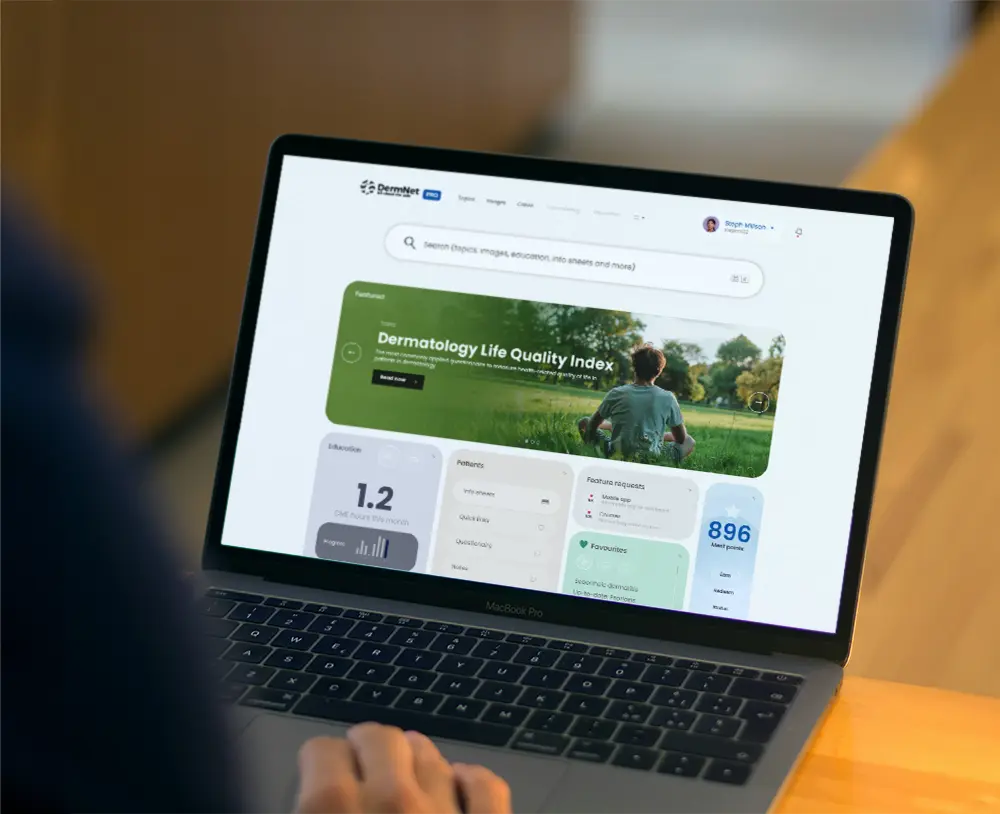
NEWS
Join DermNet PRO
Read more
Quick links
Created 2008.
In dermoscopy, the first step algorithm identifies whether a lesion is melanocytic or nonmelanocytic. Pattern analysis is the method preferred by many expert dermoscopists to diagnose melanocytic lesions and to differentiate benign melanocytic lesions from malignant melanoma. Pattern analysis refers to the simultaneous assessment of the diagnostic value of all dermoscopy features shown by the lesion.
In general terms, benign lesions have few colours, a regular structure and are symmetrical in pattern. Malignant tumours often have several colours (especially melanoma), disordered structure and asymmetry of pattern.
If conventional or morphological pattern analysis appears too complicated, use modified pattern analysis, or the 3-point checklist to identify malignant pigmented lesions.
Non-concentric multicomponent pattern is highly suspicious of malignancy, but is occasionally seen in benign lesions, eg collision tumours, recurrent naevus, congenital melanocytic naevus.
Reticular pattern Globular pattern Homogeneous pattern Starburst pattern Complex pattern Complex pattern Multicomponent pattern Multicomponent pattern 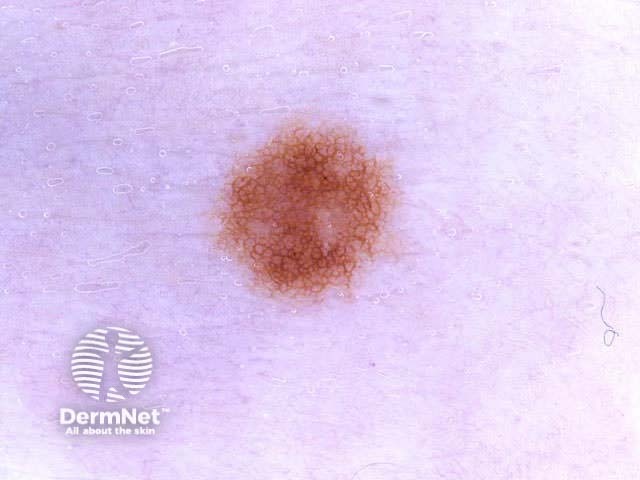
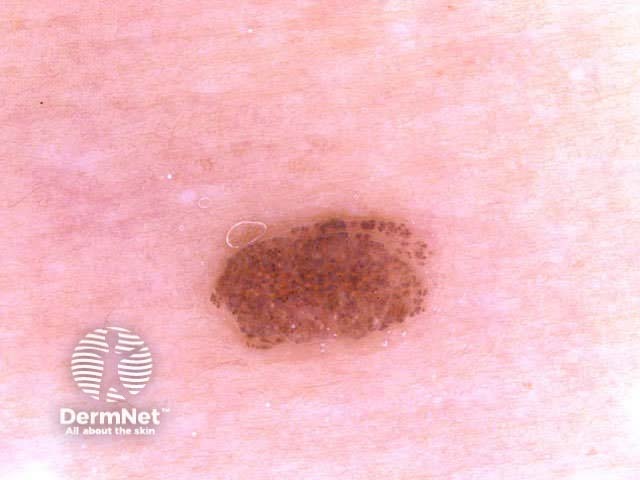
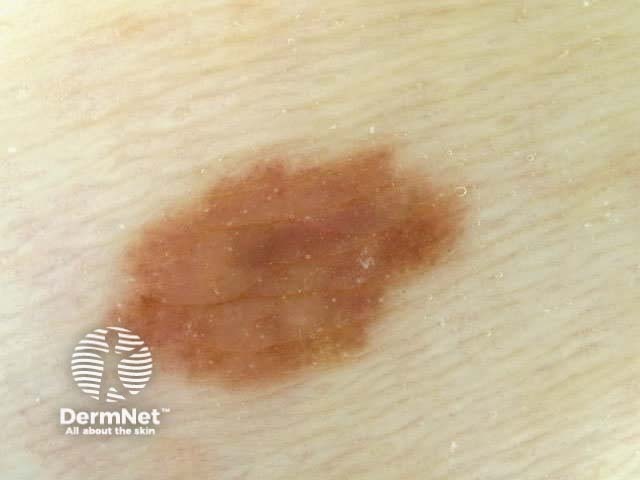
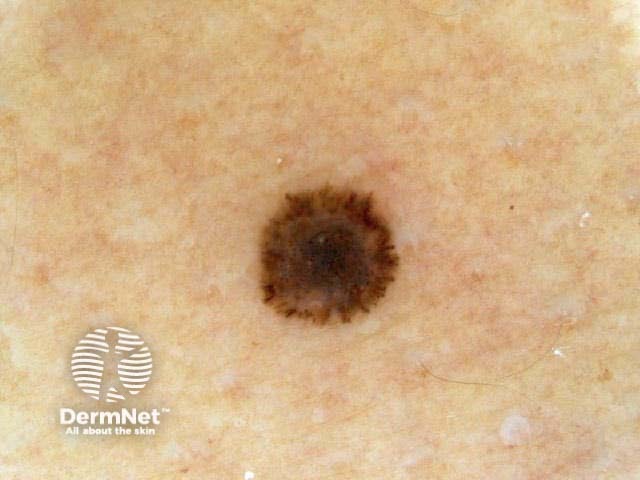
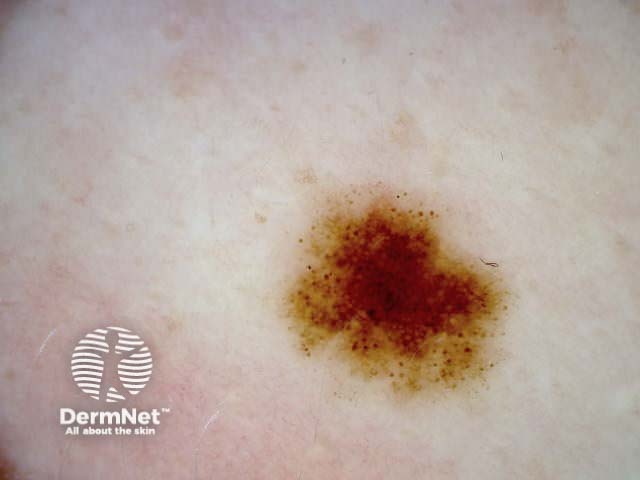
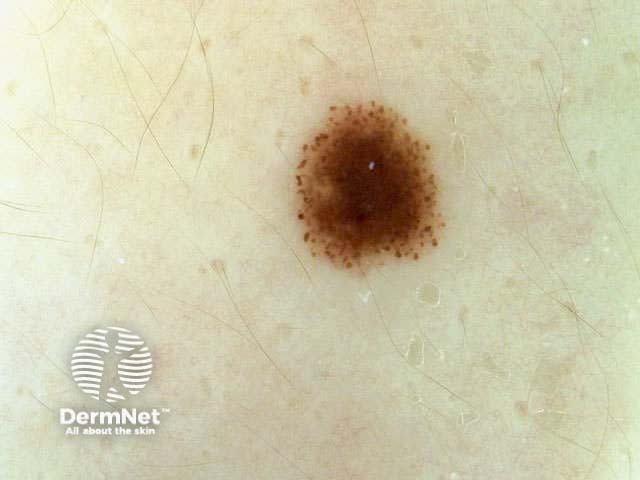
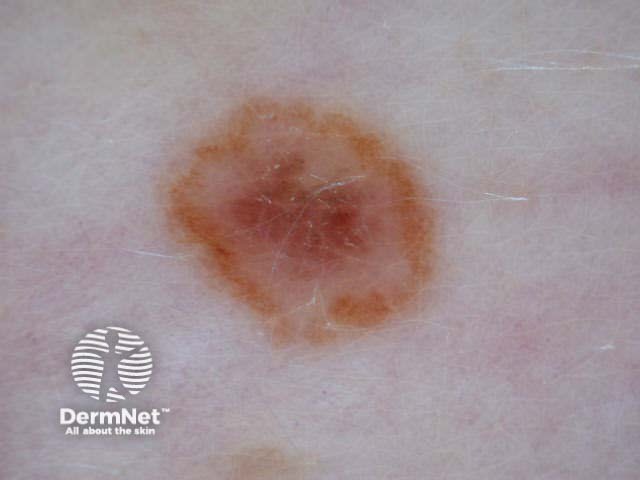
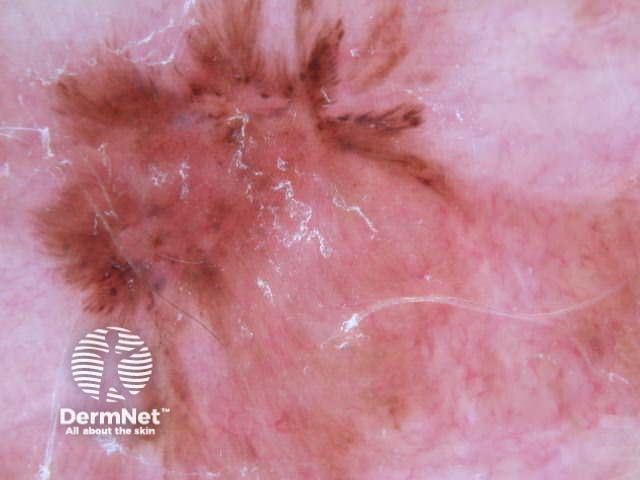
Fading pigment network Regular globules Regular streaks Central hypopigmentation Symmetrical blotches Comma-like vasculature Symmetrical blotches/network Regular pseudonetwork Parallel furrow pattern Parallel lattice pattern Parallel fibrillar pattern Parallel diffuse pattern 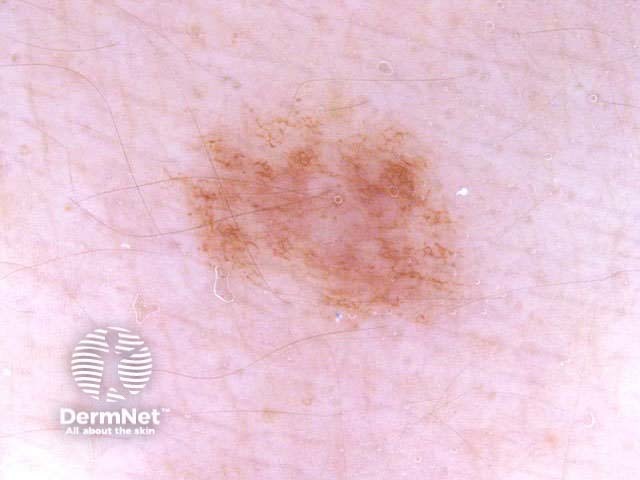
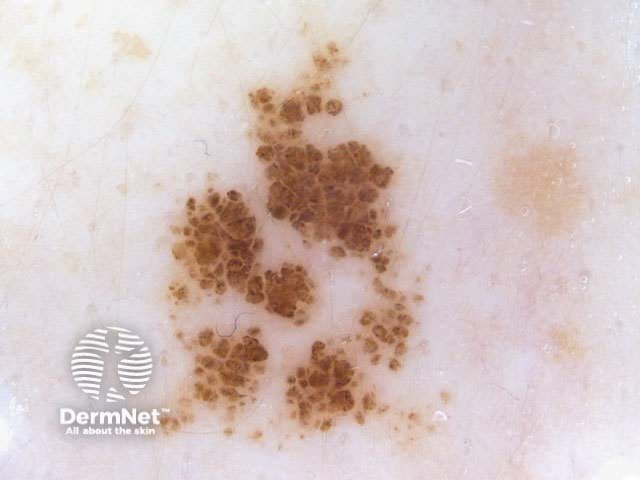
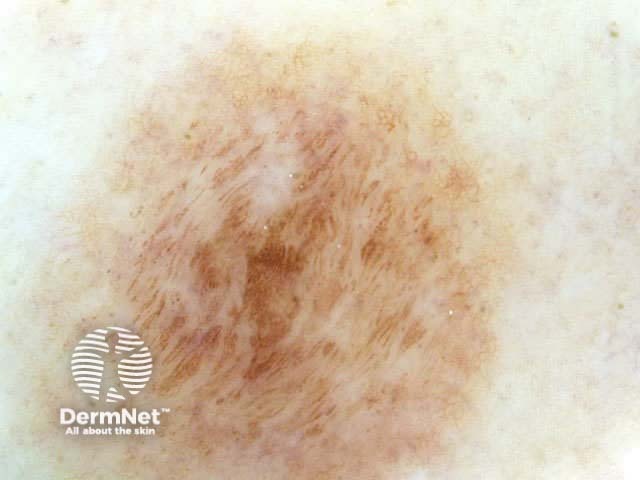
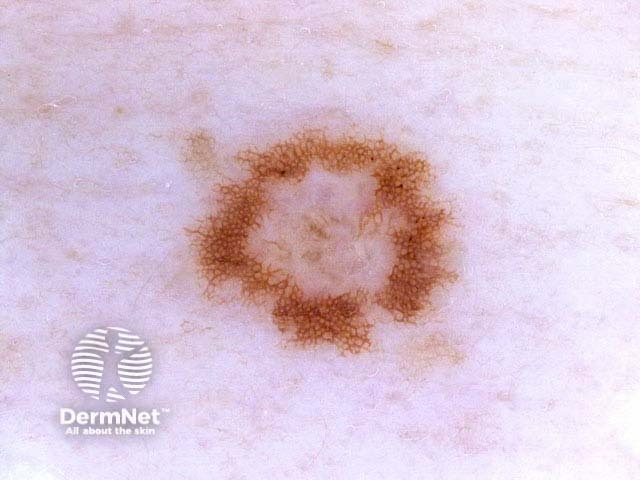
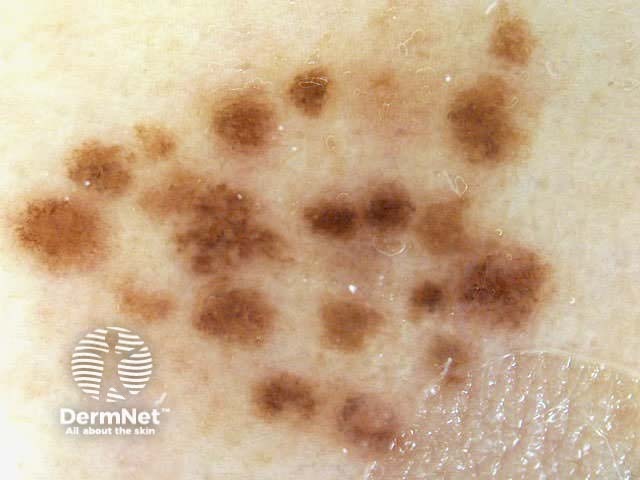
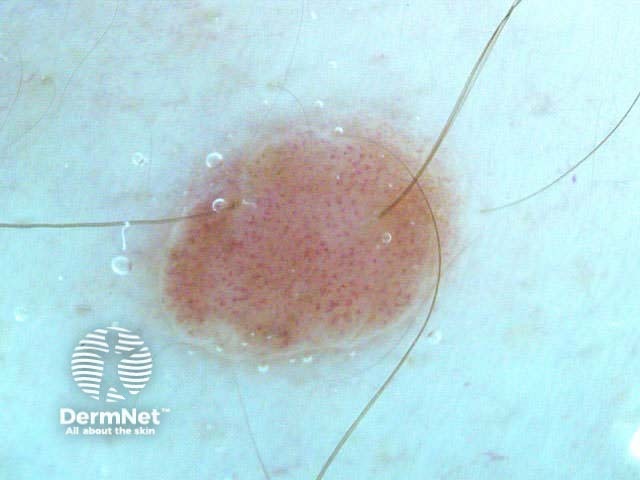
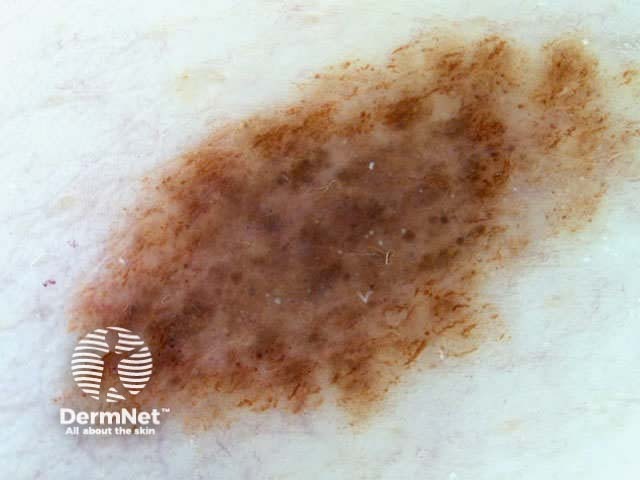
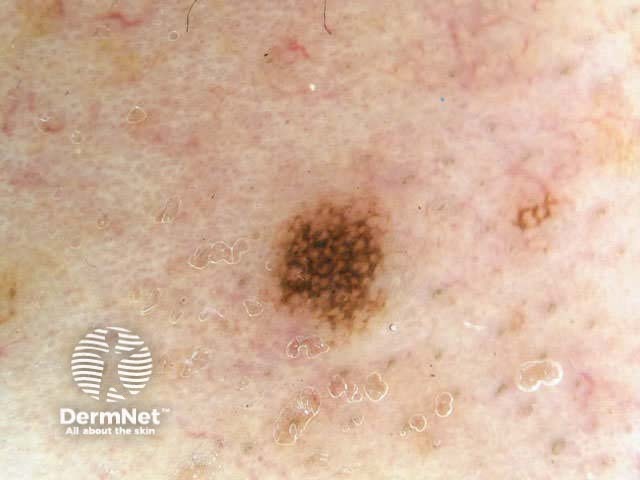
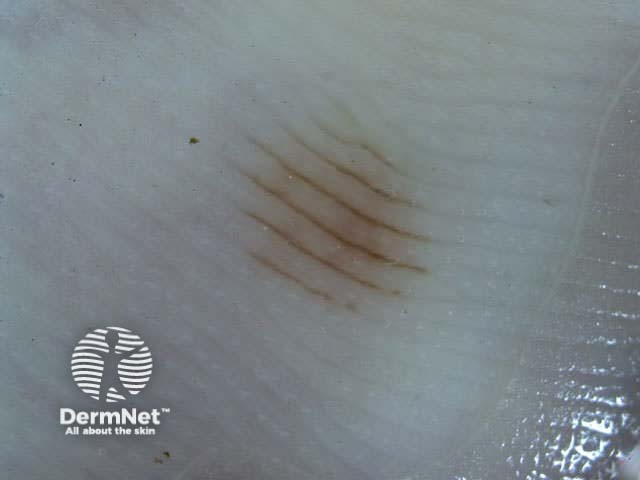
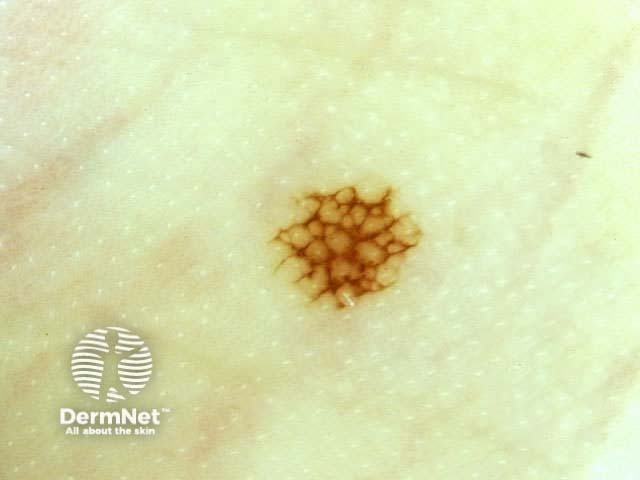
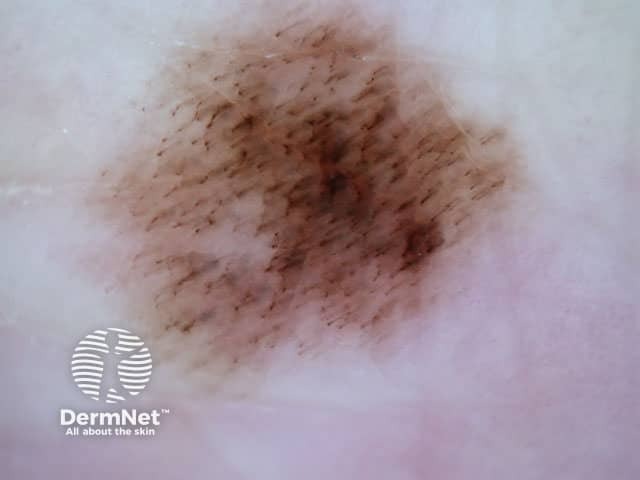
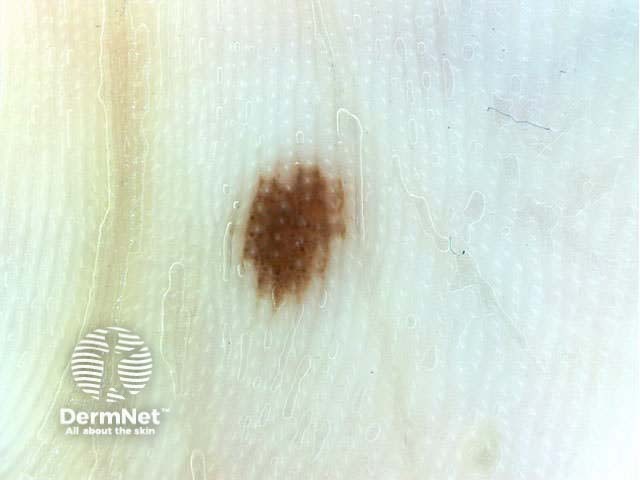
Multicomponent pattern Multicomponent pattern Multicomponent pattern Parallel ridge pattern 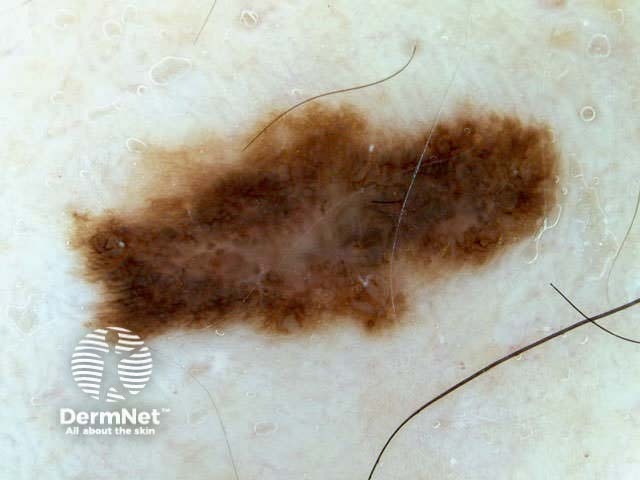
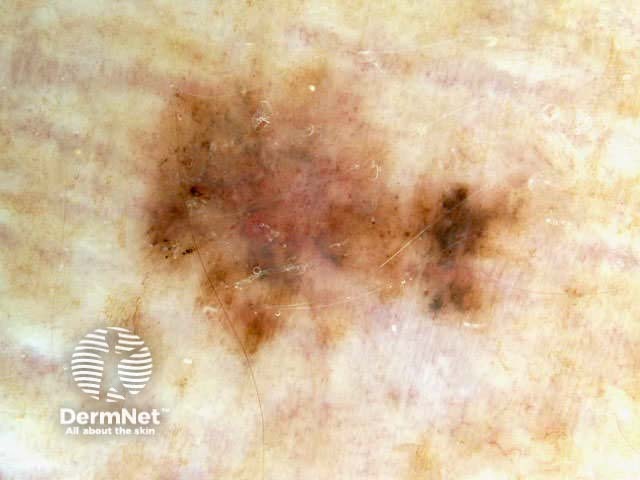
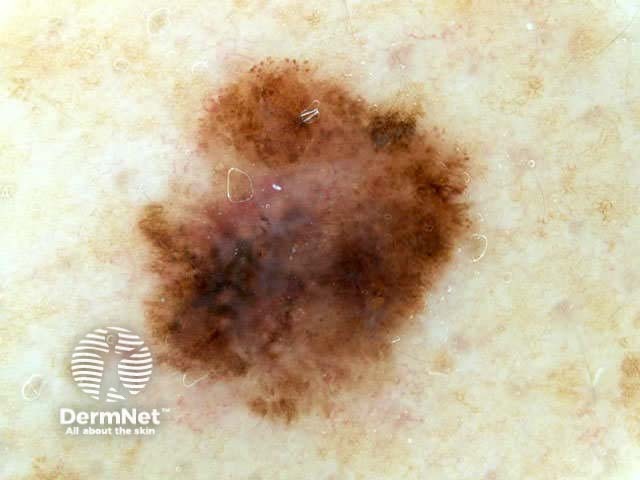
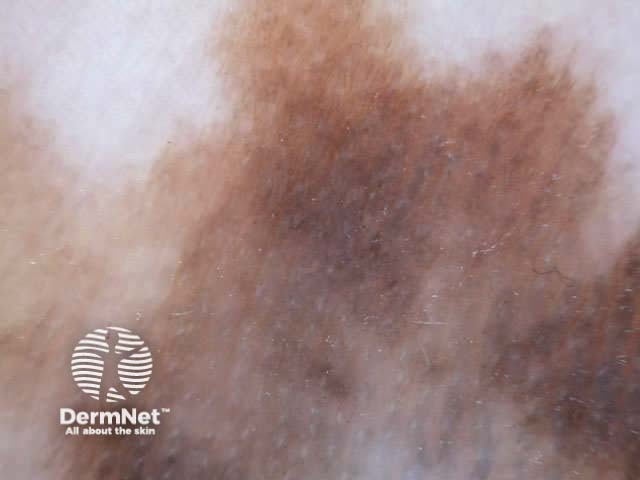
Atypical pigment network Irregular globules Asymmetrical blotches Focal irregular streaking Five to six colours Blue-white veil Scar-like depigmentation Blue pepper granules Irregular vessels Melanoma on the face Parallel ridge pattern Asymmetrical blotches, dots 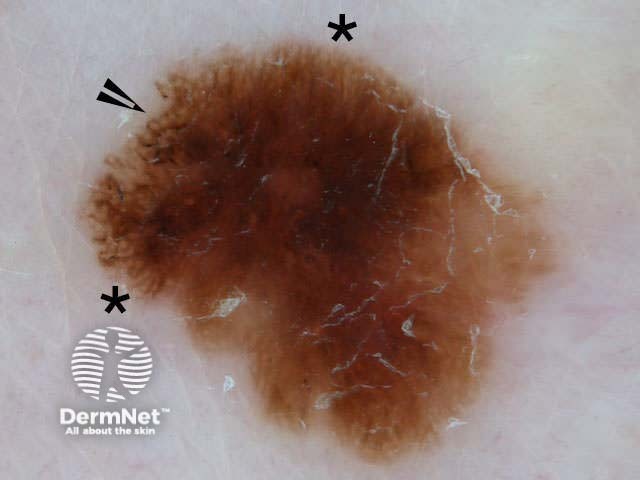
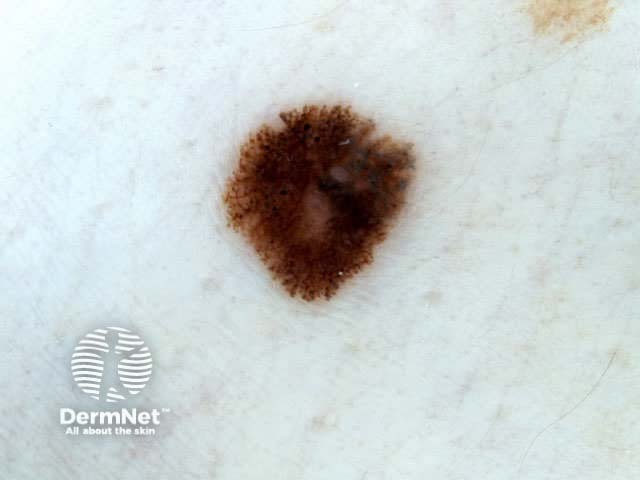
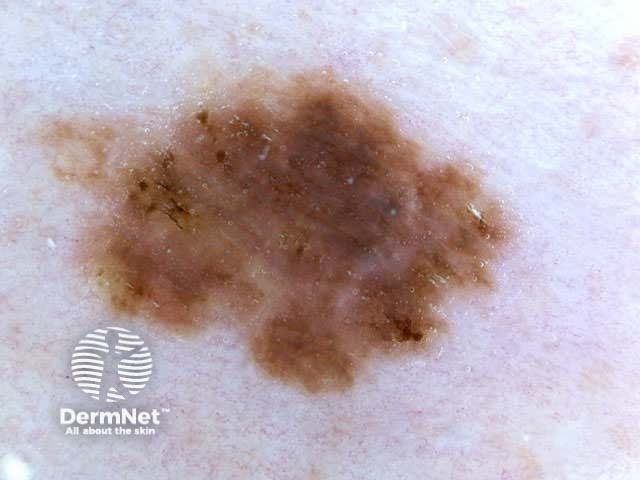
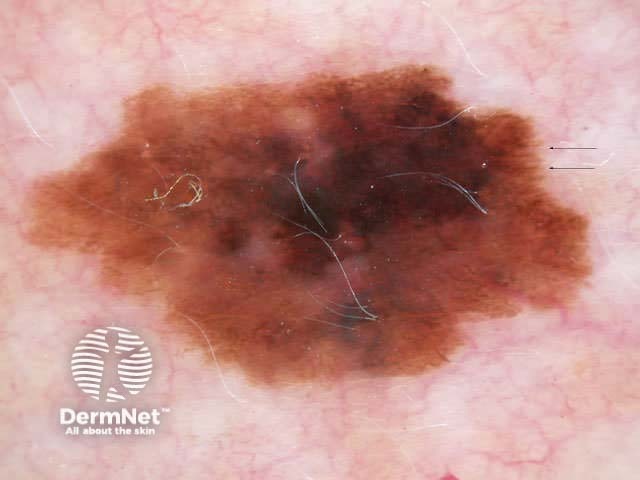
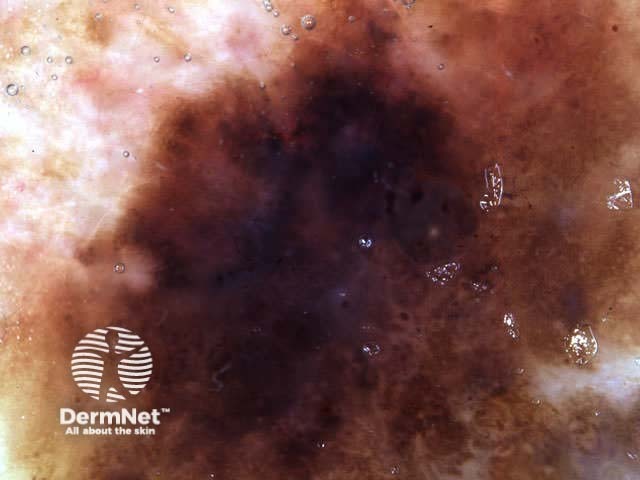
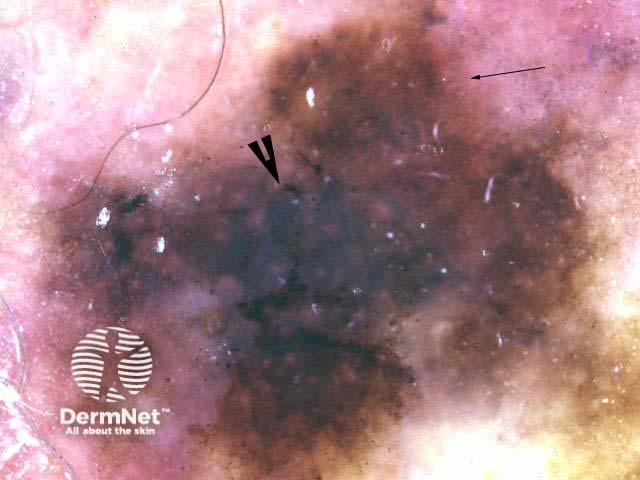
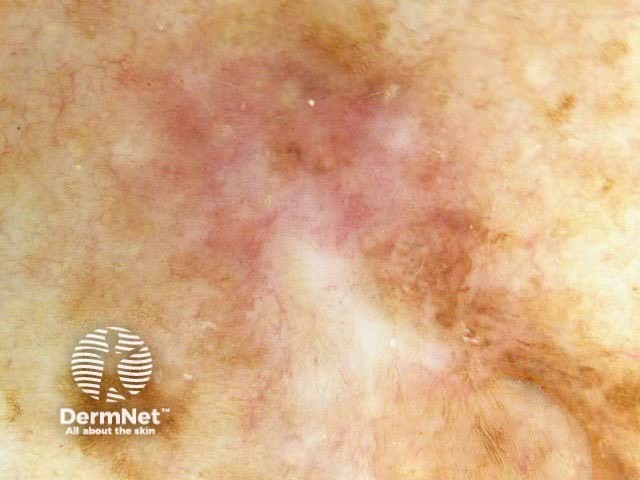
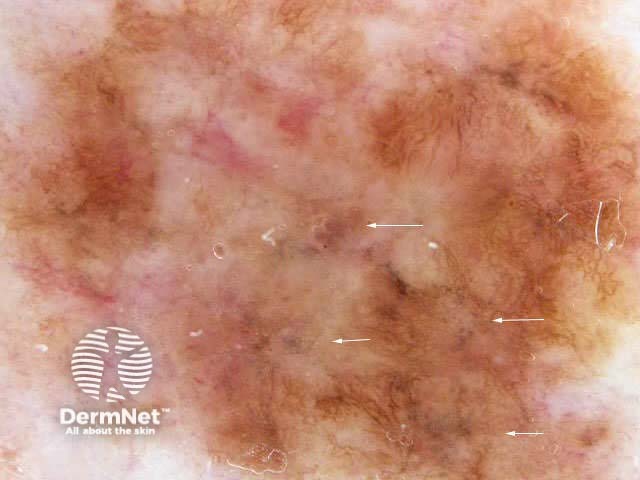
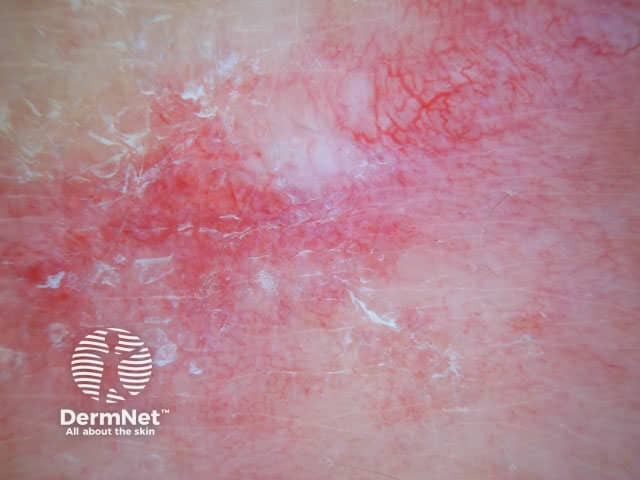
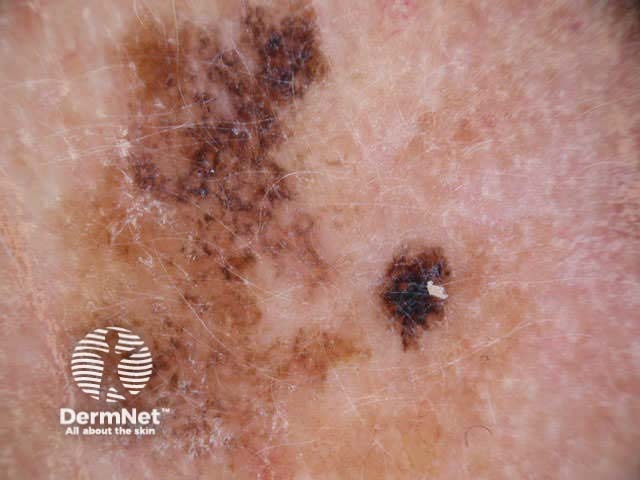
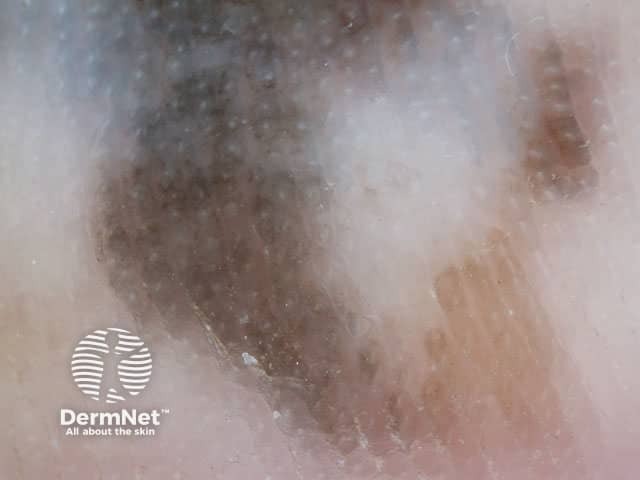
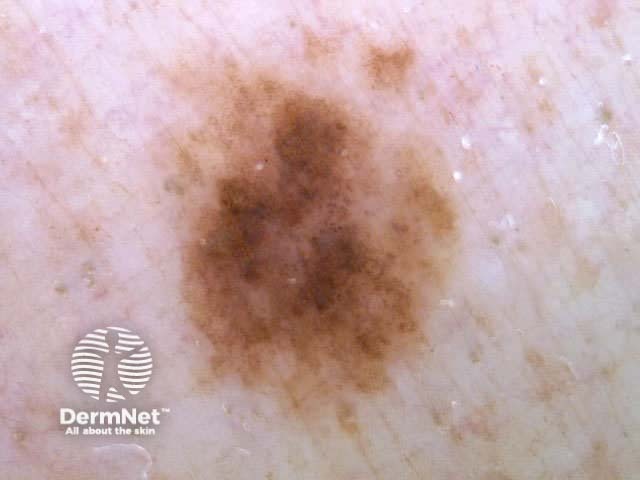
Modified or revised pattern analysis is the descriptive system described by Kittler et al, now widely adopted. Terminology is much simpler in this system than in tranditional metaphoric dermoscopic pattern recognition. It is a single step system. Describe the lesion and decide if it should be excised or not. Lesions with asymmetry of structural elements and patterns are suspicious of malignancy.
Dermoscopic features are broken down into elements: lines and rounded structures. The absence of a defined structure is described as structureless.
Reticular brown lines Branched red lines Thick curved lines Parallel brown lines Brown and grey circles (←) Grey dots (←) Orange clods Pseudopods (*) 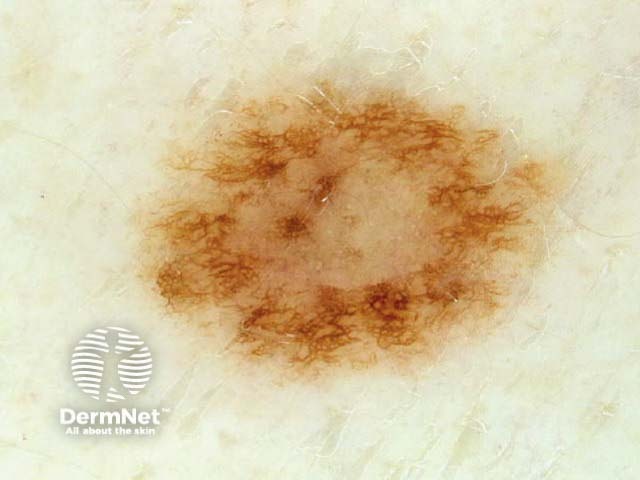
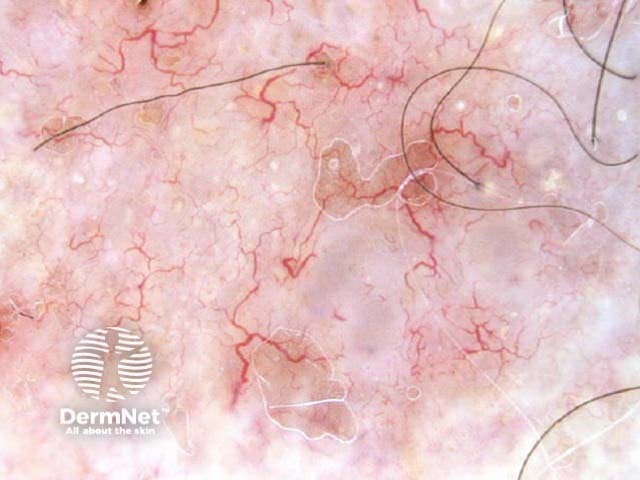
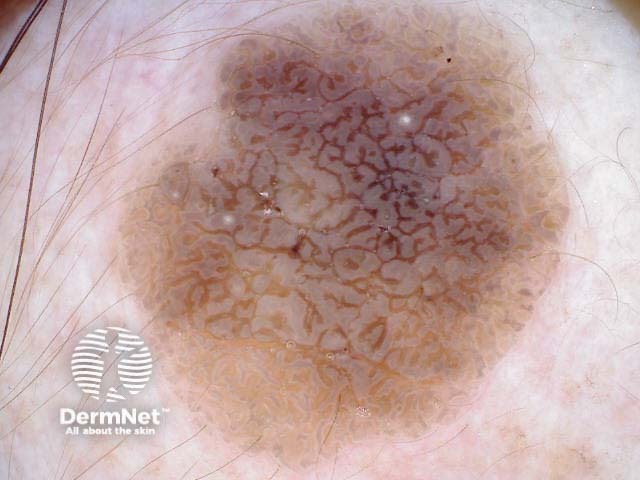
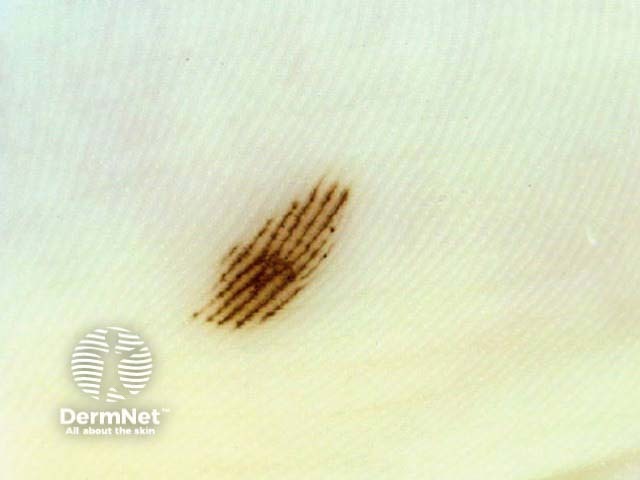
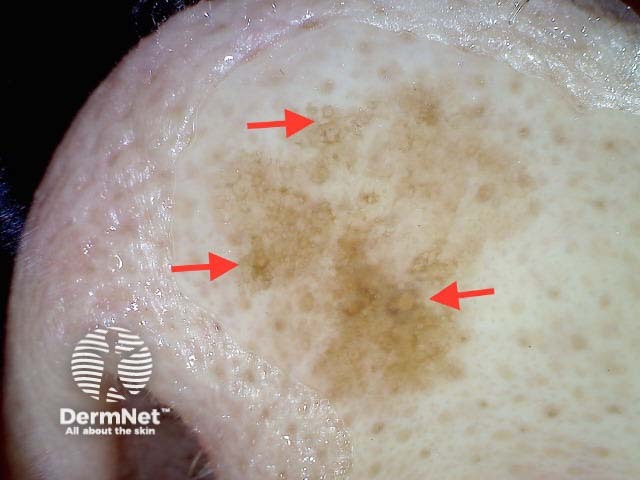
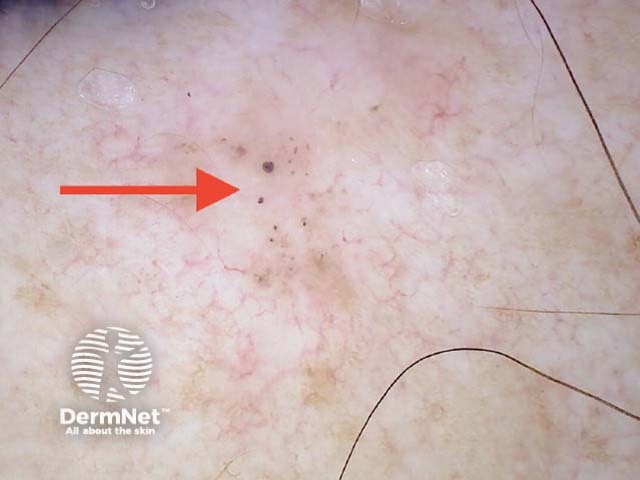
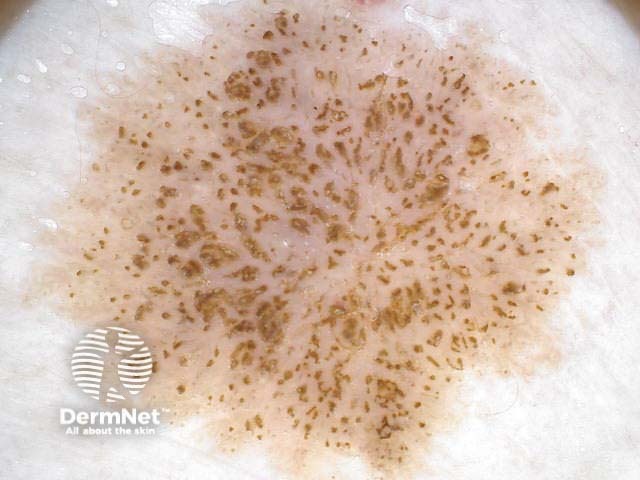
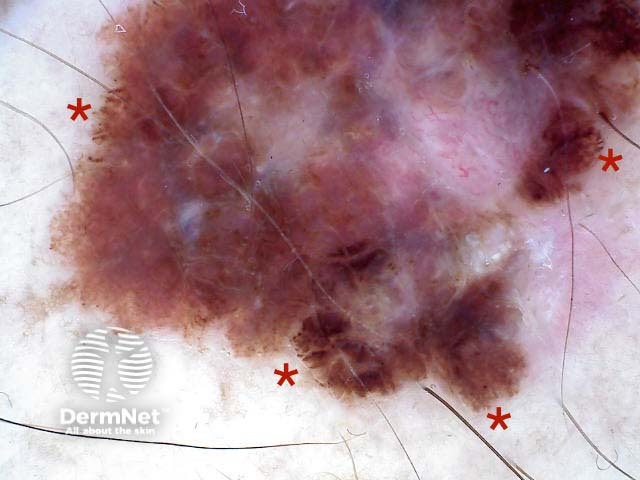
Global dermoscopic patterns for melanocytic lesions are described using these terms.
Reticular pattern Radial line pattern Parallel furrow pattern Mixed pattern, mainly lines Clod pattern Dotted pattern Structureless pattern Mixed pattern, mainly structureless 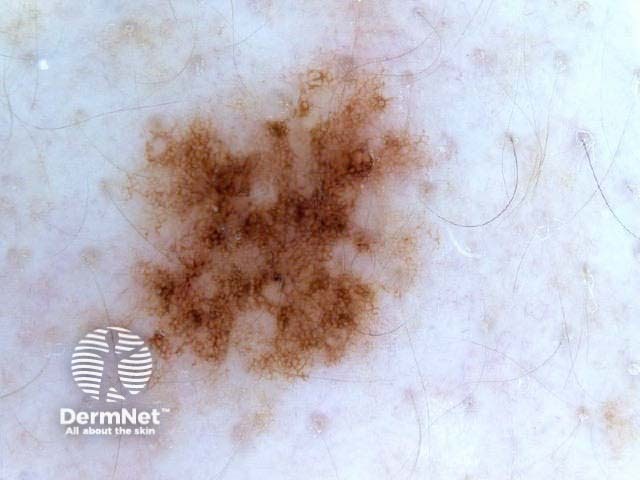
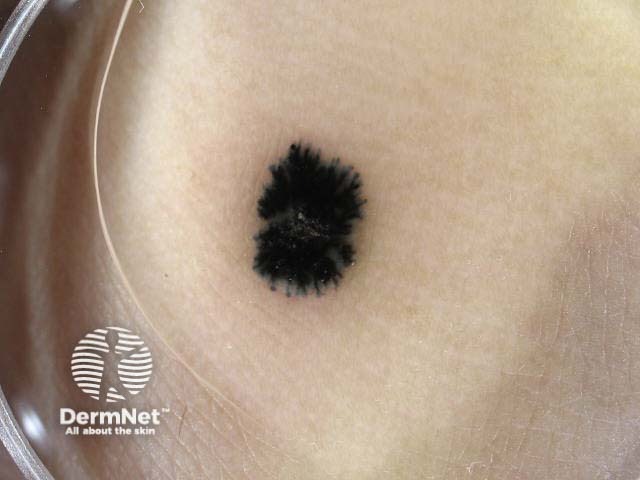
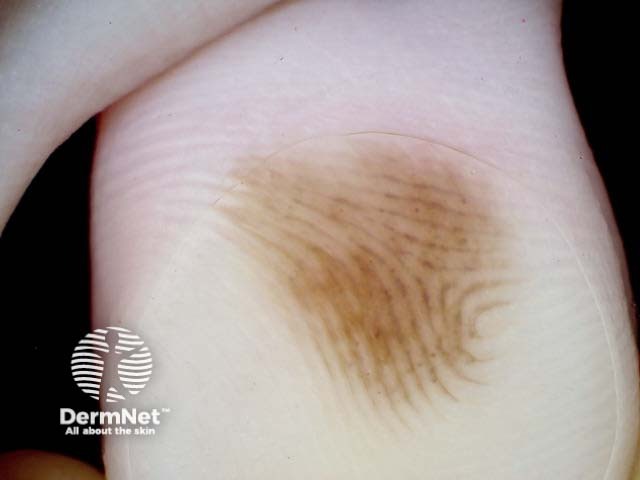
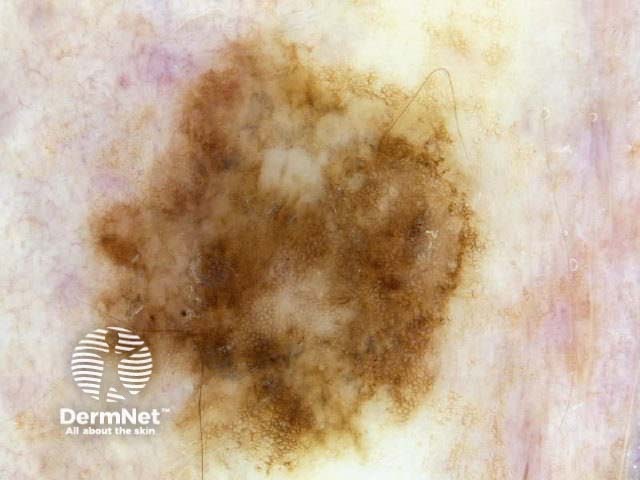
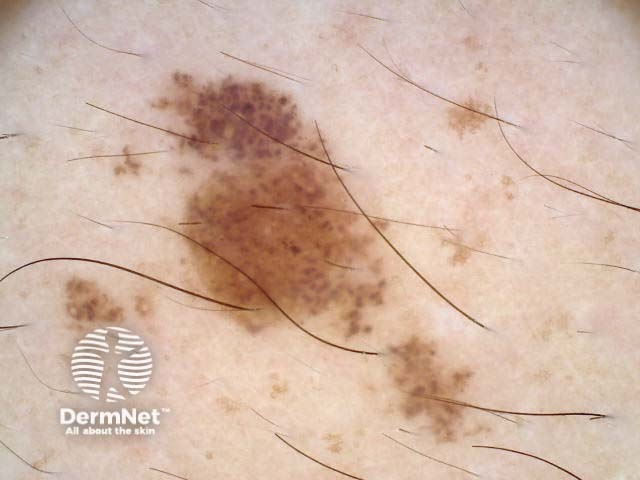
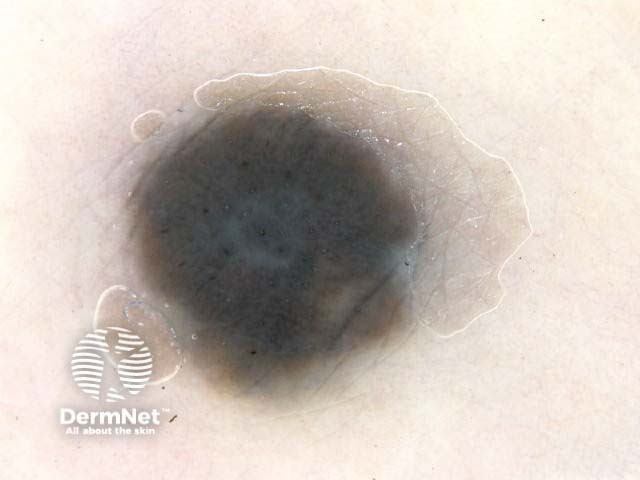
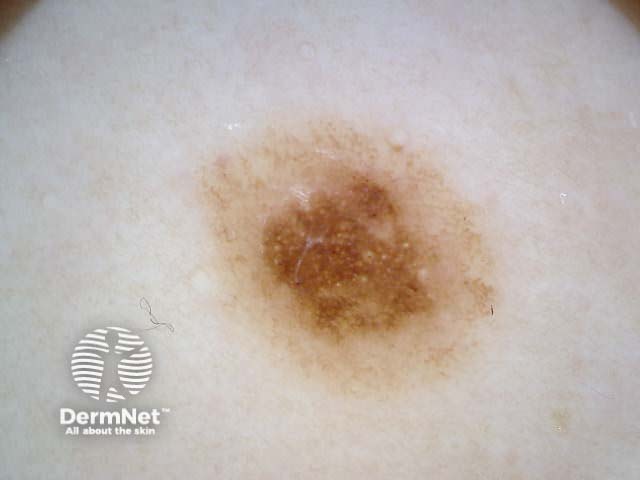
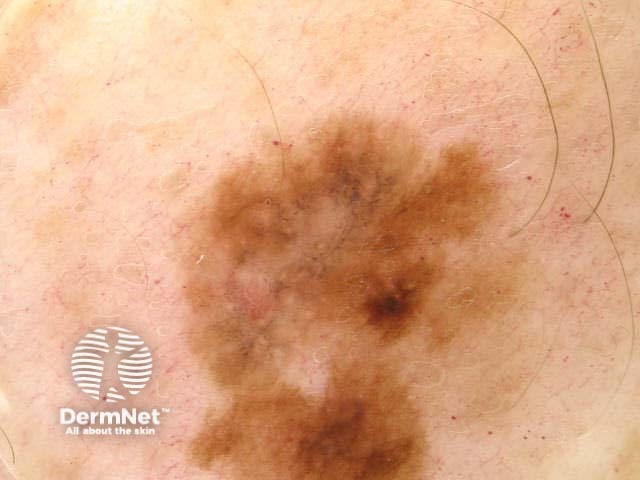
Non-melanocytic lesions are made up of the same elements.
Orange clods Black, white clods and circles Grey dots Thick curved lines, dark brown clods Brown and blue-grey dots/clods Blue-black clods, branched red lines Segmental peripheral radial lines Radial lines around central dot Branched red lines Red branched lines, shiny white streaks Shiny white streaks Yellow/red structureless zones Red clods Purple clods Blue clods Structureless red/brown parallel ridge pattern Peripheral network, central white area Bland, structureless pigmentation Prominent central white area Radial white shiny streaks 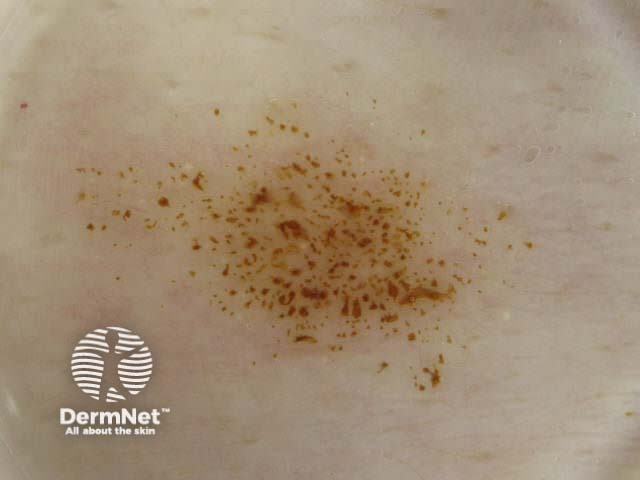
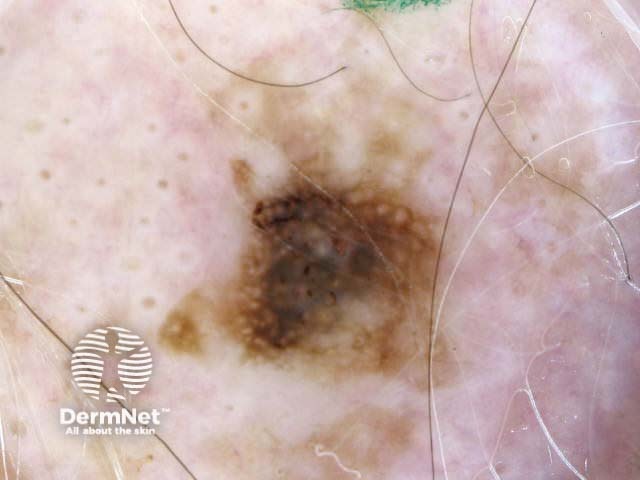
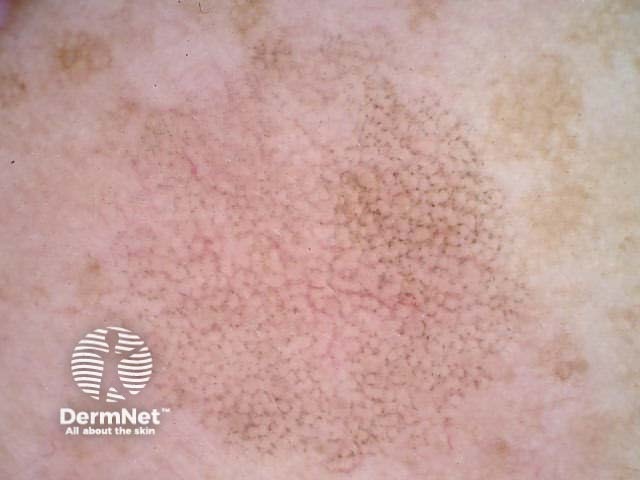
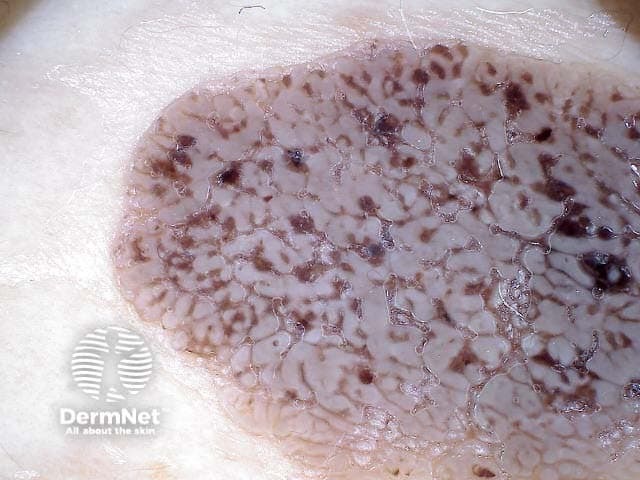
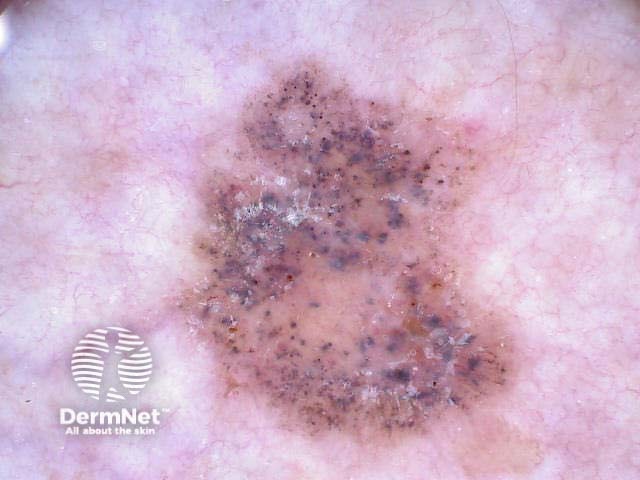
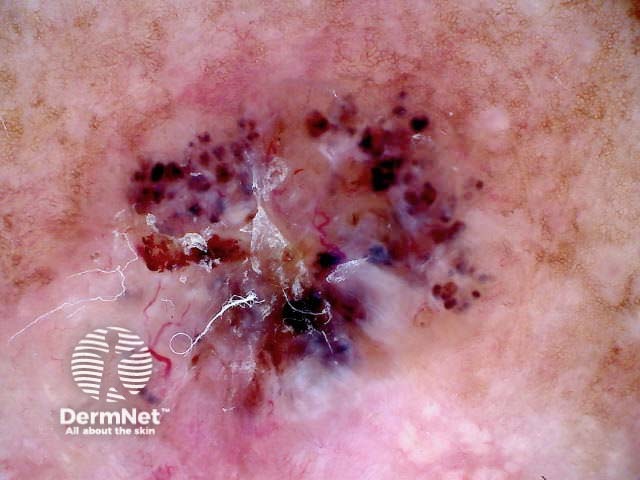
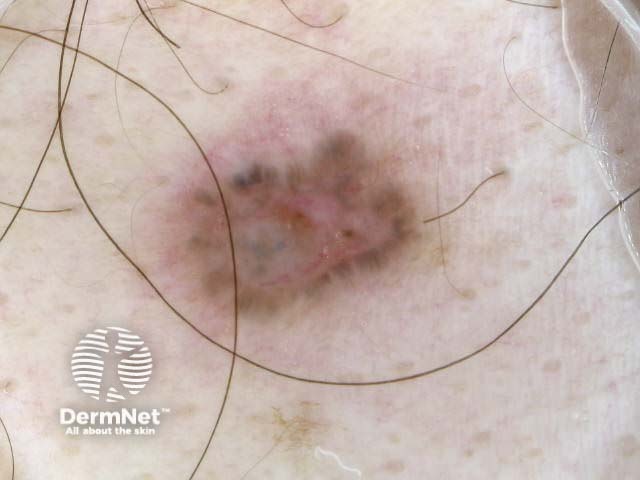
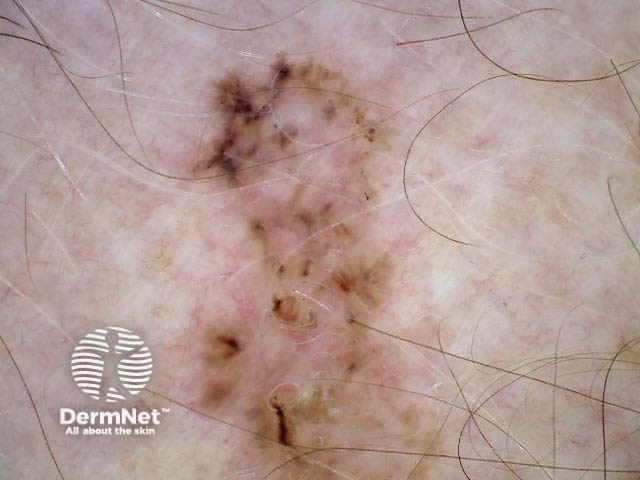
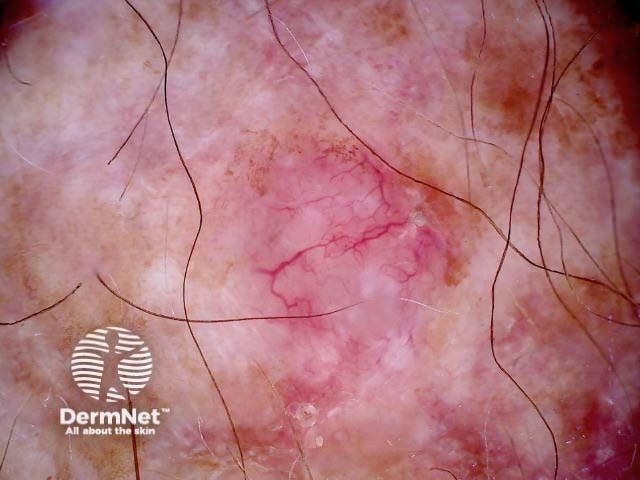
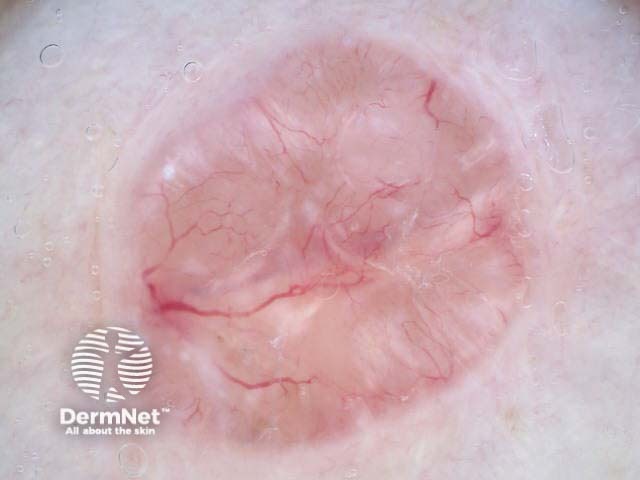
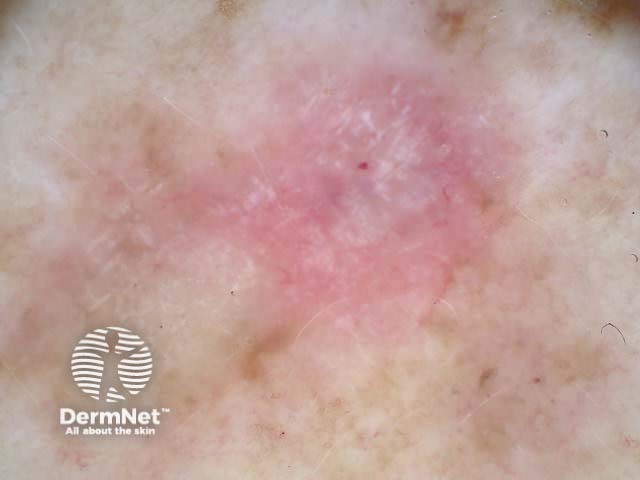
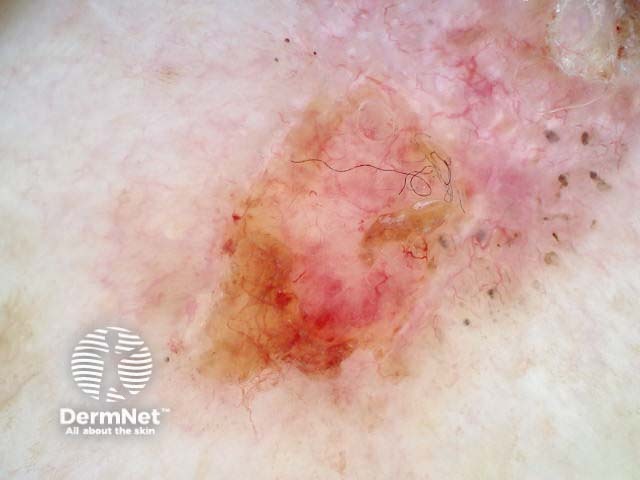
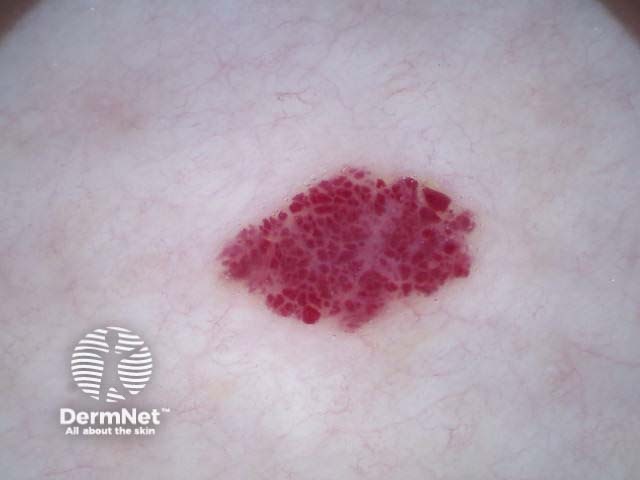
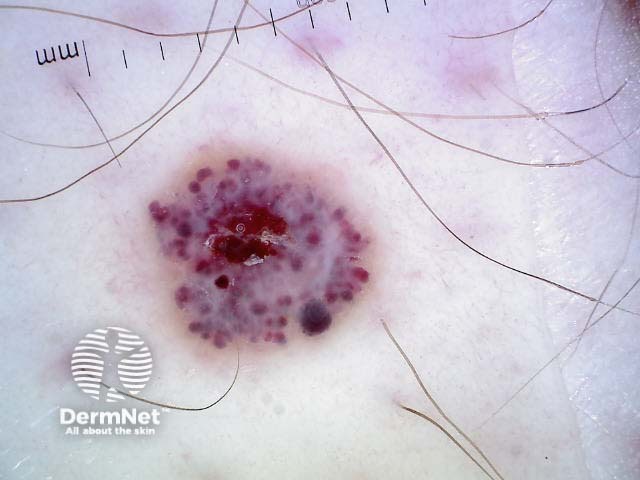
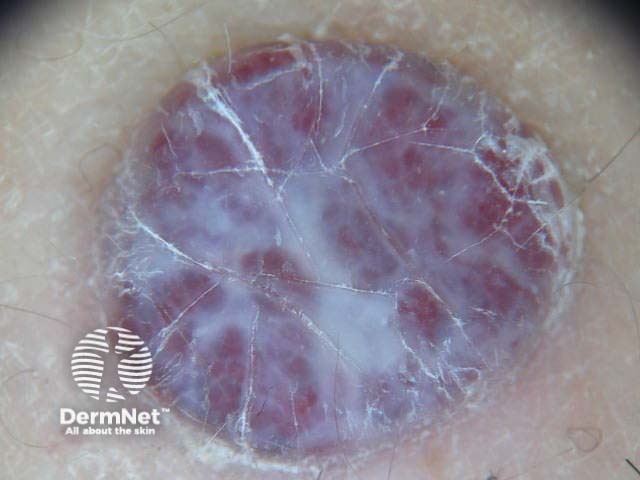
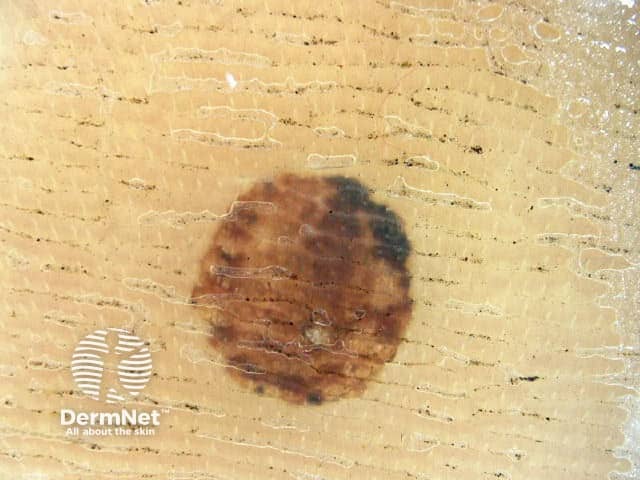
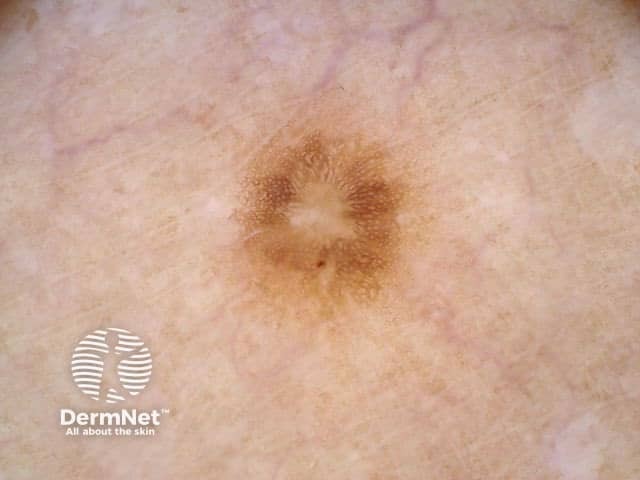
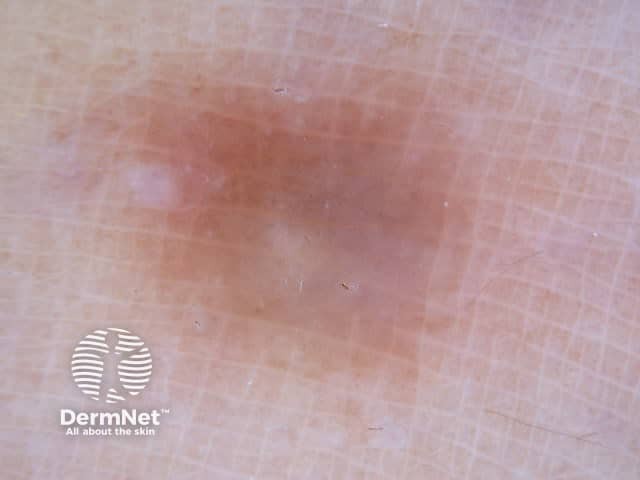


Chaos means the lesion shows more than one pattern, and asymmetry of structure and/or colour on dermatoscopy. This is true for melanoma, basal cell carcinomas and squamous cell carcinomas. Consider excising the lesion if it has one or more dermoscopic clues to malignancy:
All the melanocytic lesions illustrated in the figures below show chaos. Similar chaos and clues can be observed in the basal cell carcinomas illustrated above.
Dermoscopy. Chaos and clues Dermoscopy. Chaos and clues Dermoscopy. Chaos and clues Dermoscopy. Chaos and clues Dermoscopy. Chaos and clues Dermoscopy. Chaos and clues Dermoscopy. Chaos and clues Dermoscopy. Chaos and clues 







Practice pattern analysis by identifying global and local features in melanocytic lesions. Do the same using modified pattern analysis terminology.
See the DermNet bookstore.